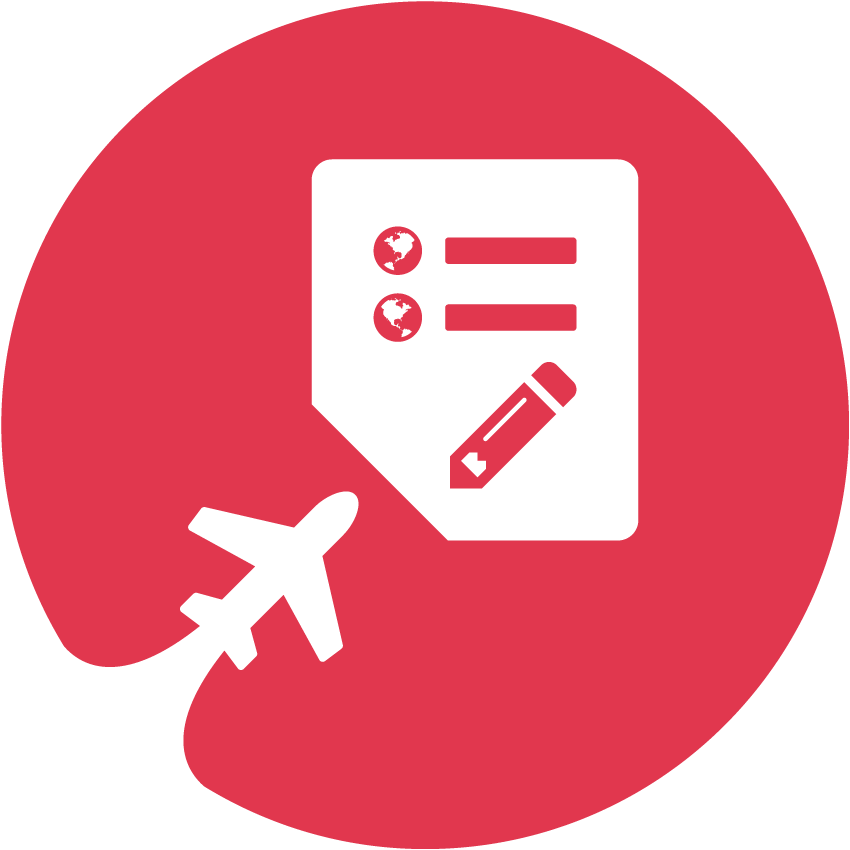Are you a doctor or medical professional with knowledge of the situation in Italy Why not apply to contribute to this page? You will get a link and referrals to your clinic from this site.
-
Summary You can't Edit
1Summary of recommendations
In general, no special medications or vaccinations are necessary for travel to Italy. In view of a recent measles outbreak, all travelers to Italy should make sure they are fully immunized against measles, as below.
Vaccinations:
Measles, mumps, rubella (MMR) Two doses recommended for all travelers born after 1956, if not previously given Tetanus-diphtheria Revaccination recommended every 10 years Influenza Recommended for all travelers from November through April -
Immunizations You can't Edit
2Immunizations
All children should be up-to-date on routine childhood immunizations, as recommended by the American Academy of Pediatrics, prior to international travel. The following are the recommended vaccinations for Italy:
Measles-mumps-rubella vaccine: two doses are recommended (if not previously given) for all travelers born after 1956, unless blood tests show immunity. Many adults born after 1956 and before 1970 received only one vaccination against measles, mumps, and rubella as children and should be given a second dose before travel. MMR vaccine should not be given to pregnant or severely immunocompromised individuals.
Tetanus-diphtheria vaccine is recommended for all travelers who have not received a tetanus-diphtheria immunization within the last 10 years.
Influenza vaccine is recommended for all travelers during flu season, which runs from November through April. Influenza vaccine may cause soreness at the injection site, low-grade fevers, malaise, and muscle aches. Severe reactions are rare. Influenza vaccine should not be given to pregnant women during the first trimester or those allergic to eggs.
-
Recent outbreaks of diseases You can't Edit
3Recent outbreaks
A cluster of three cases of infection with a novel coronavirus, known as the Middle East respiratory syndrome coronavirus (MERS-CoV), were reported from Italy in May-June 2013. The first case had recently traveled to Jordan, where the infection was presumably acquired. The other two cases were close contacts of the first (see the World Health Organization). There has been no evidence of further spread. There does not appear to be any significant risk for travelers to Italy, although the coronavirus outbreak is ongoing in the Middle East.
An outbreak of hepatitis A was reported from northern Italy in early 2013, causing 352 cases in the first five months of the year, which appeared to be related to consumption of frozen mixed berries (see Eurosurveillance). Travelers should avoid eating frozen mixed berries until further notice.
An outbreak of Legionnaires' disease was reported in August 2011 among travelers who had stayed in accommodations in the town of Lazise, Italy. A total of 17 cases were identified (seven from the Netherlands, six from Germany, two from Italy, one from Austria and one from Denmark). For further information, go to Eurosurveillance. Legionnaires' disease is a bacterial infection which typically causes pneumonia but may also involve other organ systems. The disease is usually transmitted by airborne droplets from contaminated water sources, such as cooling towers, air conditioners, whirlpools, and showers. Legionnaires' disease is not transmitted from person-to-person. Any traveler to Lazise who develops fever, cough, chest pain, or difficulty breathing should seek immediate medical attention.
An outbreak of Legionnaires' disease was reported in September 2006 from the center of Venice, causing 15 cases, none of them fatal. In May 2002, a small Legionnaires' outbreak was reported among pilgrims to San Giovanni Rotondo in the Puglia region, affecting six people, one of whom died. The source of infection was not identified (see Eurosurveillance).
An outbreak of chikungunya fever, a mosquito-borne illness characterized by fever and incapacitating joint pains, was reported in August 2007 from Castiglione di Cervia and Castiglione di Ravenna, two small villages divided by a river in the province of Ravenna, Region Emilia-Romagna. In retrospect, the first case appeared to be a local resident who had traveled in June to the state of Kerala in India, where a major outbreak of chikungunya fever was taking place. The outbreak spread to the neighboring towns of Cervia, Cesena, Ravenna, and Rimini. A small number of cases were also reported from Bologna. A total of 214 cases were laboratory confirmed. As of October, the outbreak had been controlled (see Eurosurveillance, the World Health Organization, and the Joint ECDC/WHO Mission Report). Symptoms of chikungunya fever include fever, joint pains, muscle aches, headache, and rash. The disease is almost never fatal, but may be complicated by protracted fatigue and malaise. Rarely, the infection is complicated by meningoencephalitis, which is usually seen in newborns and those with pre-existing medical conditions. To prevent mosquito bites, travelers to Emilia-Romagna should apply insect repellent (containing 30% DEET) and keep themselves covered. Because of the risk of mother-to-child transmission, pregnant women need to take special care to protect themselves from mosquitoes.
Outbreaks of acute respiratory illness have been reported over the last few years among those who visiting certain beaches near the cities of Genoa and La Spezia in northwestern Italy. The outbreaks appeared to be associated with proliferation of Ostreopsis ovata, a marine dinoflagellate species usually living in tropical and subtropical areas but recently found with increasing frequency in the Mediterranean Sea. The most common symptoms were fever, sore throat, cough and shortness of breath, usually occurring within several hours after exposure. No long-term consequences were reported, though 20% of patients required hospitalization. For further information, go to Eurosurveillance.
Measles outbreaks have occurred regularly in Italy in recent years, mostly involving those who have not been fully immunized. A total of 2151 cases were reported nationwide from July 2009 to September 2010. An additional 133 cases were reported for the first five months of 2012. All travelers born after 1956 should make sure they have had either two documented MMR or measles immunizations or a blood test showing measles immunity. Those born before 1957 are presumed to be immune. Although measles immunization is usually begun at age 12 months, children between the ages of 6 and 11 months should be given an initial dose of measles or MMR vaccine before traveling to Italy.
The most recent measles outbreak was reported from the autonomous Province of Bolzano, Italy, in July 2011, causing with more than 600 reported cases. A large measles outbreak began in September 2007 in the Piemonte region of northern Italy, chiefly affecting unvaccinated adolescents. As of May 2008, almost 1000 cases had been recorded and the outbreak was ongoing (see Eurosurveillance). Between January and March, 2008, a measles outbreak occurred in the region of Apulia in southeastern Italy, causing 16 cases (see Eurosurveillance). Between November 2006 and January 2007, another outbreak occurred in Apulia region, causing 18 cases (see Eurosurveillance). Between June and September 2006, three clusters of measles cases were reported in the Roma/Sinti (gypsy) populations in three different Italian regions: the Autonomous Province of Bolzano-South Tyrol in northern Italy; Lazio in central Italy; and the island of Sardinia in the southwest (see Eurosurveillance). During the first four months of 2006, a measles outbreak was reported from the province of Grosseto in Toscana (Tuscany), resulting in 40 cases, chiefly adolescents and young adults who had never been immunized (see Eurosurveillance).
In the spring of 2003, a small measles outbreak was reported from Abruzzo, Puglia, and Calabria (see Eurosurveillance). A much larger outbreak was reported from Campania in April 2002, leading to 99 cases of pneumonia, 15 cases of encephalitis and four deaths. Most cases occurred in children between the ages of 5 and 14. The outbreak was related to inadequate vaccination levels and was controlled by a mass vaccination campaign (see Eurosurveillance, the Centers for Disease Control, and ProMED-mail; June 27, 2002).
A single case of variant Creutzfeldt-Jakob disease (CJD) has been identified in Italy. The disease is acquired by eating beef from cows with a related infection known as bovine spongiform encephalopathy (mad cow disease). At present, the risk of acquiring variant CJD from European beef appears to be extraordinarily low, at most about one in 10 billion servings. The Centers for Disease Control does not advise against eating European beef, but suggests that travelers who wish to reduce their risk may either abstain from beef while in Europe or eat only solid pieces of muscle meat, such as steak, rather than products like sausage or chopped meat that might be contaminated. There is no evidence of any risk from pork, lamb, milk or milk products. For recent updates, go to ProMED-mail.
-
Other Infections You can't Edit
4Other infections
- West Nile virus (reported chiefly from northeastern Italy; 14 confirmed cases reported from 7 provinces in 2011, including two cases in Sardinia and one in the Marche region; six human cases reported in 2010, including cases from Veneto, Vicenza, Rovigo (see Eurosurveillance); six human cases reported from the Veneto region in August-September 2008, in association with local outbreak in birds and horses; all lived in a wetland area near the Po River delta in the province of Rovigo; two human cases reported in October 2008 from the province of Ferrara in the Emilia-Romagna region following local outbreak in horses; nine human cases, three of them fatal, confirmed in Emilia-Romagna between June and October 2009; see Eurosurveillance and ProMED-mail, October 7 and November 22, 2008; and May 24, 2010)
- Opisthorchiasis (parasitic infection characterized by fever, nausea, abdominal pain, muscle aches, and a high eosinophil count; cases reported from Italy after consumption of marinated, uncooked tench filets from Lakes Bolsena and Trasimeno; see Emerging Infectious Diseases)
- Toscana virus (common cause of aseptic meningitis between May and October; see Emerging Infectious Diseases; case reported in Swiss traveler who had visited the island of Elba in August 2008; see Eurosurveillance)
-
Ehrlichiosis (reported from Sardinia and from the northeastern Alpine area; see Emerging Infectious Diseases)
- Tick-borne encephalitis (rural or forested areas in the spring or summer; sporadic cases recorded in northern Italy in the area of Florence, Trento, and Belluno; first cases reported in Friuli Venezia Giulia in 2006; see Eurosurveillance)
- Trichinosis (caused by eating imported horse meat or imported sausages; see Eurosurveillance and WHO (PDF) for further details; outbreak reported in January 2013 after consumption of wild boar sausages among hunters and their relatives and friends)
- Brucellosis (cattle, sheep, and goats are the most common sources of infection; incidence declining in most areas, but hundreds of cases still reported annually from the southern regions, including Sicily, Calabria, Puglia, and Campania)
- Tularemia
-
Leishmaniasis
- Anthrax (animal cases reported in 2004 from mountainous areas in the south)
- Rabies (Italy has been considered rabies-free since 1997, but two foxes were diagnosed with rabies in the Province of Udine in the northeastern part of the country in October 2008; see Eurosurveillance)
- HIV (human immunodeficiency virus) infection is reported, but travelers are not at risk unless they have unprotected sexual contacts or receive injections or blood transfusions.
- Scorpion stings
- Black widow spider bites
For disease statistics and updates on recent outbreaks, go to the Istituto Superiore di Sanita website.
-
Food and Water You can't Edit
5Food and water precautions
Avoid cooked foods that are no longer piping hot. Cooked foods that have been left at room temperature are particularly hazardous. Avoid unpasteurized milk and any products that might have been made from unpasteurized milk, such as ice cream. Avoid food and beverages obtained from street vendors. Do not eat raw or undercooked meat or fish. Some types of fish may contain poisonous biotoxins even when cooked. Barracuda in particular should never be eaten. Other fish that may contain toxins include red snapper, grouper, amberjack, and sea bass.
All travelers should bring along an antibiotic and an antidiarrheal drug to be started promptly if significant diarrhea occurs, defined as three or more loose stools in an 8-hour period or five or more loose stools in a 24-hour period, especially if accompanied by nausea, vomiting, cramps, fever or blood in the stool. Antibiotics which have been shown to be effective include ciprofloxacin (Cipro), levofloxacin (Levaquin), rifaximin (Xifaxan), or azithromycin (Zithromax). Either loperamide (Imodium) or diphenoxylate (Lomotil) should be taken in addition to the antibiotic to reduce diarrhea and prevent dehydration.
If diarrhea is severe or bloody, or if fever occurs with shaking chills, or if abdominal pain becomes marked, or if diarrhea persists for more than 72 hours, medical attention should be sought.
-
Insect Tick Protection You can't Edit
6Insect and Tick Protection
Wear long sleeves, long pants, and boots, with pants tucked in when traveling to rural or forested areas. Apply insect repellents containing 25-50% DEET (N,N-diethyl-3-methylbenzamide) or 20% picaridin (Bayrepel) to exposed skin (but not to the eyes, mouth, or open wounds). DEET may also be applied to clothing. Products with a lower concentration of either repellent need to be repplied more frequently. Products with a higher concentration of DEET carry an increased risk of neurologic toxicity, especially in children, without any additional benefit. Do not use either DEET or picaridin on children less than two years of age. For additional protection, apply permethrin-containing compounds to clothing and shoes. Permethrin-treated clothing appears to have little toxicity. Perform a thorough tick check at the end of each day with the assistance of a friend or a full-length mirror. Ticks should be removed with tweezers, grasping the tick by the head. Many tick-borne illnesses can be prevented by prompt tick removal.
-
General Advice You can't Edit
7General advice
Bring adequate supplies of all medications in their original containers, clearly labeled. Carry a signed, dated letter from your personal physician describing all medical conditions and listing all medications, including generic names. If carrying syringes or needles, be sure to carry a physician's letter documenting their medical necessity. Pack all medications in hand luggage. Carry a duplicate supply in the checked luggage. If you wear glasses or contacts, bring an extra pair. If you have significant allergies or chronic medical problems, wear a medical alert bracelet.
Pack a personal medical kit, customized for your trip (see description). Take appropriate measures to prevent motion sickness and jet lag, discussed elsewhere. On long flights, be sure to walk around the cabin, contract your leg muscles periodically, and drink plenty of fluids to prevent blood clots in the legs. For those at high risk for blood clots, consider wearing compression stockings.
Avoid contact with stray dogs and other animals. If an animal bites or scratches you, clean the wound with large amounts of soap and water and contact local health authorities immediately. Wear sun block regularly when needed. Use condoms for all sexual encounters. Ride only in motor vehicles with seat belts. Do not ride on motorcycles.
-
Health Insurance You can't Edit
8Health insurance
Make sure your health insurance covers you for medical expenses abroad. If not, supplemental insurance for overseas coverage, including possible evacuation, should be seriously considered. If illness occurs while abroad, medical expenses including evacuation may run to tens of thousands of dollars. For a list of travel insurance and air ambulance companies, go to Medical Information for Americans Traveling Abroad on the U.S. State Department website. Bring your insurance card, claim forms, and any other relevant insurance documents. Before departure, determine whether your insurance plan will make payments directly to providers or reimburse you later for overseas health expenditures. The Medicare and Medicaid programs do not pay for medical services outside the United States.
-
Ambulance You can't Edit
9Ambulance and Emergency Services
For an ambulance anywhere in Italy, call 118.
-
Physicians and Hospitals You can't Edit
10Physicians and hospitals
For an online guide to hospitals, pharmacies, and English-speaking physicians in the vicinity of Milan, Florence, Rome, and Naples, go to the websites of the U.S. Consulates General for those regions.
-
Medical Facilities You can't Edit
11Medical facilities
(reproduced from the U.S. State Dept. Consular Information Sheet)
Medical facilities are available, but may be limited outside urban areas. Public hospitals sometimes do not maintain the same standards as hospitals in the United States, so travelers are encouraged to obtain insurance that would cover a stay in a private Italian hospital or clinic. It is almost impossible to obtain an itemized hospital bill from public hospitals, as required by many U.S. insurance companies, because the Italian National Health Service charges one inclusive rate (care services, bed and board)...
-
Travel with children You can't Edit
12Traveling with children
Before you leave, make sure you have the names and contact information for physicians, clinics, and hospitals where you can obtain emergency medical care if needed.
All children should be up-to-date on routine childhood immunizations, as recommended by the American Academy of Pediatrics. Children who are 12 months or older should receive a total of 2 doses of MMR (measles-mumps-rubella) vaccine, separated by at least 28 days, before international travel. Children between the ages of 6 and 11 months should be given a single dose of measles vaccine. MMR vaccine may be given if measles vaccine is not available, though immunization against mumps and rubella is not necessary before age one unless visiting a country where an outbreak is in progress. Children less than one year of age may also need to receive other immunizations ahead of schedule (see the accelerated immunization schedule).
Be sure to pack a medical kit when traveling with children. In addition to the items listed for adults, bring along plenty of disposable diapers, cream for diaper rash, and appropriate antibiotics for common childhood infections, such as middle ear infections.
-
Maps You can't Edit
13Maps
Helpful maps are available in the University of Texas Perry-Castaneda Map Collection and the United Nations map library. If you have the name of the town or city you'll be visiting and need to know which state or province it's in, you might find your answer in the Getty Thesaurus of Geographic Names.
-
Embassy You can't Edit
14Embassy/Consulate Location
(reproduced from the U.S. State Dept. Consular Information Sheet)
Americans living in or visiting Italy for more than a few weeks are encouraged to register at the Consular Section of the U.S. Embassy in Rome or at one of the three U.S. consulates where they may obtain updated information on travel and security within Italy. The U.S. Embassy in Rome, Italy is located at Via V. Veneto 119/a. Tel. 39-06-46741, and fax 39-06-4674-22177. Internet address: http://italy.usembassy.gov/english/.
The U.S. Consulates are located in:
Florence, at Lungarno Amerigo Vespucci 38. Tel. 39-055-239-8276/7/8/9, or 39-055-217-605; fax: 39-055-284-088.
Milan, at Via Principe Amedeo 2/10. Tel. 39-02-290-351 and fax 39-02-290-35-273.
Naples, at Piazza della Repubblica. Tel. 39-081-583-8111 and fax 39-081-761-1804.
There are U.S. Consular Agents located in:
Genoa, at Via Dante 2. Tel. 39-010-584-492 and fax 39-010-553-3033
Palermo, at Via Vaccarini 1. Tel. 39-091-305-857 and fax 39-091-625-6026.
Trieste, at Via Roma 15. Tel. 39-040-660-177 and fax 39-040-631-240.
-
Safety Information You can't Edit
15Safety information
For information on safety and security, go to the U.S. Department of State, United Kingdom Foreign and Commonwealth Office, Foreign Affairs Canada, and the Australian Department of Foreign Affairs and Trade.
Page drop box for MDth Italy
Been to Italy recently? What is the current health situation there? Do you have any information on the place. Is the information on this page as you found it?
You can earn Reputation score by joining our community and also enrol on the TravelTip$ program and get paid for good advice by other travellers.
If you are not logged in, or choose to make the drop box anonymously you can tell the community honestly what you seen without any concern. Please send images or other evidence to support your claims.

The MDtravelhealth channel is a source of travel health information for travellers, written by medical professionals.
MDth Navigation
Page is maintained by
The MDtravelhealth channel relies on medical professionals from all over the world to maintain the Travel Health Information on these pages.
Topic Tags for Italy
Topic Tags are what bind the Red Planet Travel site together, and are very important.
This place has been tagged:
Got a Question?
Ask any travel related question or help others with your experience and earn Reputation Score and become a valued member of our community.
MDtravelhealth Medical Contributions
Before you apply read about the Medical Professionals Roles on Red Planet Travel
You need to be logged in and have applied to MDth channel to contribute to this page.Have something to Contribute?
We are looking to grow the information on this site, if you have something to contribute to any page then we'd like to hear from you.
 What's more you can now earn money (paid direct via Paypal) for writing descriptions about places you know.
What's more you can now earn money (paid direct via Paypal) for writing descriptions about places you know.
You will need to tell other members about yourself and your relevant knowledge and experience about what you want to contribute about.
Look below for some example page types, and types of people whose views on a place might be useful to know.
Page Type: Hotel
Tell us your job, knowledge, experience..
My Experience: Doctor
If you are the owner/manager of any place, then you can, of course, take control of your page and add relevant information other visitors might want to know
Related Pages
Check out our page on Italy for information on how to get there, accommodation, video and reviews.
Medical Clinics
Do you have any recent experiences of clinics here? Please search for them, use the drop box at the bottom of their page to send us comments - good and bad.
Hotels near Italy
- Casa vacanze a Roma - Cleo Casa Vacanze a Roma - Cleo is an apartment located in Rome. It features a balcony and classic décor. The apartment is composed of 2 separate bedrooms, a living room, a fully equipped kitchen, and a bathroom.
- Hotel Artis Just a 5-minute drive from Cinecittà Film Studios and Metro Station, Hotel Artis is set in a residential area, 9 km from Rome city centre. It offers free parking and a 24-hour front desk.
- MC Holiday House Located in Rome, MC Holiday House is 600 metres from Giulio Agricola Metro Station. This self-catering apartment includes 2 bedrooms, a balcony and free WiFi access.
- B&B Liberamente Set in Rome’s eastern suburbs, B&B Liberamente offers free parking and air-conditioned rooms with a balcony. Wi-Fi is free, and a tram linking with Rome’s centre stops 200 metres away. Rooms at Liberamente B&B have a flat-screen TV and classic...
- Aga Guest House Centrally located in Rome, Aga Guesthouse is set 500 metres from Lucio Sestio Metro Station. It offers a sweet breakfast and air-conditioned accommodation with a hydro-massage shower and antique furnishings.
- Appartamento Primavera Offering free WiFi, Appartamento Primavera is a 15-minute walk from the Balzani Train Station. It features air-conditioned accommodation with a balcony. This apartment comes with wooden furnishings, a flat-screen TV and a DVD player.
- Domus Celio Rufo Domus Celio Rufo consists of an apartment located in Rome. It features free WiFi and Porta Furba Metro Station is less than a 10-minute walk away.
- Casa Vacanza Roma Cinecittà Casa Vacanza Roma Cinecittà is an air-conditioned apartment located in Rome. Giulio Agricola Metro Station is a 5-minute walk away. The apartment is composed of 2 separate bedrooms, a living room, a fully equipped kitchen, and a bathroom.
- Gala B&B With free Wi-Fi throughout, Gala B&B offers rooms in the Appio Latino district in Rome. The nearest Metro Station is Lucio Sestio, a 3-minute walk away. Featuring air conditioning and a safety deposit box, rooms have a TV with DVD player.
- Al Solito Posto B&B Featuring free Wi-Fi access available throughout, Al Solito Posto B&B offers rooms in Rome, a 10-minute walk from the Cinecittà Movie Studios. The Giulio Agricola Metro Stop is 350 metres away.
More hotels from our Partner Booking.com
Points of Interest near Italy
Looking for something to do or a place to go see near Italy? Here is our list of options.
-
Pastarito Pizzarito Via Gioberti, 25/35, 00185 Roma, Italy 41.8991581 12.5007297
-
Rome Ciampino Airport Via Appia Nuova, 1651, 00040 Roma RM, Italy 41.7991948 12.5946723
-
Viale di Trastevere, 237/B, 00153 Roma, Italy 41.8771994 12.4657343
-
Leonardo da Vinci International Airport, Via dell' Aeroporto di Fiumicino, 320, 00054 Fiumicino RM, Italy 41.7998868 12.2462384
Accommodation near Italy
Looking for somewhere to stay near Italy? Here is our list of options.
-
Roma Central Guest HouseNo info yet.. Please go to this page and enter some.
-
Pinewood HotelNo info yet.. Please go to this page and enter some.
-
Mini Natuur Camping Rocca di Sotto Abruzzo ItalieNo info yet.. Please go to this page and enter some.
-
Piazza delle SireneNo info yet.. Please go to this page and enter some.
-
Cinque TerreNo info yet.. Please go to this page and enter some.
-
Hotel la MargheritaNo info yet.. Please go to this page and enter some.
-
Località RotoliNo info yet.. Please go to this page and enter some.
-
Via Guglielmo MarconiNo info yet.. Please go to this page and enter some.
-
via Galeno 8No info yet.. Please go to this page and enter some.
-
Via VitruvioNo info yet.. Please go to this page and enter some.
Related Questions
Can you help with answering any of these questions? Help other travellers with your experience and earn reputation score on this site.

 MDtravelhealth
MDtravelhealth TravelWiki
TravelWiki Perfect Place
Perfect Place
